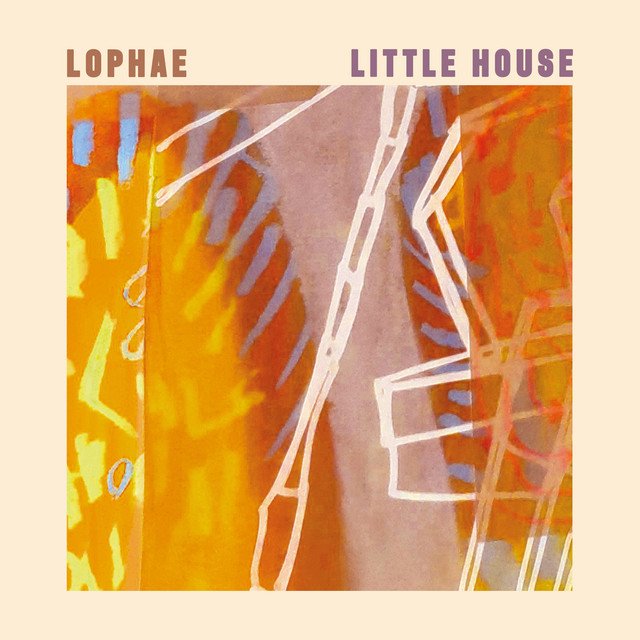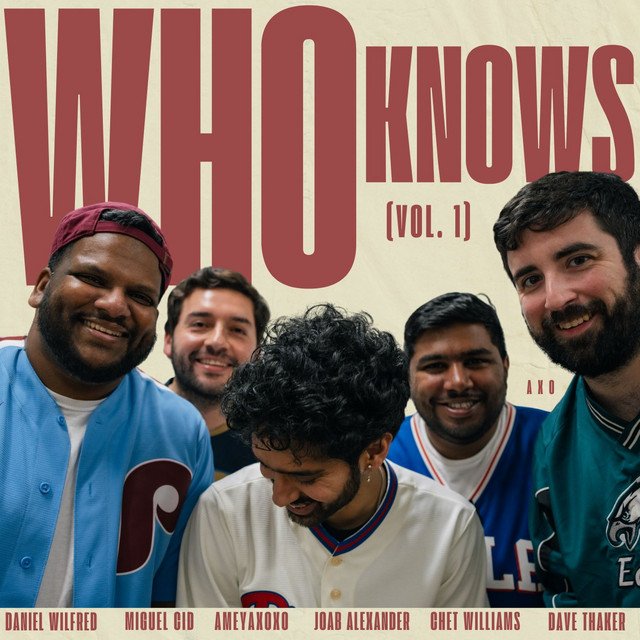Jazz Music ⁞ New Releases⁞ Artist Interviews⁞ Music News
Introduction of Jazz Music
Jazz is a genre of music that originated in the African-American communities of New Orleans, United States, in the late 19th and early 20th centuries. It is characterized by its use of improvisation, complex harmonic structures, and a wide range of musical influences, including blues, gospel, and European classical music. Jazz is known for its swing rhythm, which is created by the use of syncopated rhythms and a strong pulse. It is often played by small ensembles, such as a quintet or sextet, and is known for its ability to adapt to a wide range of musical contexts and styles. Jazz has had a significant influence on many other genres of music, and has been an important part of the cultural fabric of the United States and the rest of the world for more than a century.
Jazz by Nagamag Playlist on Spotify
Jazz Featured Releases
Gabe Preston Sounds (GPS) – Tendinitis | Jazz music review
“Όμορφη μελωδία γεμάτη πάθος και ταπεραμέντο που ανεβάζει τη διάθεση και σε παρασύρει σε ένα ξέφρενο χορό. Η ένταση του ρυθμού ανεβάζει την αδρεναλίνη και ζωντανεύει την ατμόσφαιρα. Σίγουρα ένα κομμάτι που θα ήθελες να ακούς μαζί με φίλους με τη συνοδεία του ποτού σου, ατενίζοντας από ψηλά την φωτισμένη πόλη.”
-Nagamag.com
Expand to read review translations *
“Beautiful melody full of passion and temperament that raises the mood and drags you into a frantic dance. The rhythm intensity raises adrenaline and brings to life the atmosphere. Certainly a piece you would like to hear with friends with the accompaniment of your drink, gazing at the illuminated city from above.”
-Nagamag.com
“Hermosa melodía llena de pasión y temperamento que aumenta el estado de ánimo y te arrastra a un baile frenético. La intensidad del ritmo aumenta la adrenalina y da vida a la atmósfera. Ciertamente, una pieza que le gustaría escuchar con amigos con el acompañamiento de su bebida, mirando la ciudad iluminada desde arriba.”
-Nagamag.com
The original review of “Gabe Preston Sounds (GPS) – Tendinitis” is written in the native language that is spoken by the dedicated, for this song, Nagamag’s Jazz reviewer and followed by two translations*, of which the one depends from the country of origin of the artist “Gabe Preston Sounds (GPS)” (United States) and the other one is translated to a different language than original review and the country of origin of the artist.
* Automatically Translated
Nagamag unveils the mesmerizing composition “Tendinitis”, an extraordinary creation of harmony and creativity that “Gabe Preston Sounds (GPS)” offered to all of us. A Jazz song, which evoked an emotional voyage to our curator that desired to write down a unique review for “Gabe Preston Sounds (GPS) – Tendinitis”. What also sets this song among the featured choices of Nagamag is the way that “Tendinitis” is enriched with Indie Jazz characteristics. “Gabe Preston Sounds (GPS) – Tendinitis” is a rich music creation that deserves to be listened to again and again. Nagamag is honored to share this detailed music review by one of our experienced reviewers for Jazz music compositions. As always, Nagamag keeps up evaluating Jazz songs from across the globe, ensuring that all Jazz enthusiasts around the world have access to these auditory treasures .
Additional information/sources for Gabe Preston Sounds (GPS) – Tendinitis
“The project probably fits easiest under the jazz fusion umbrella, but even there, Preston pushes boundaries — incorporating atmospheric keyboard tones, feeding their instruments through a chain of effects pedals for a psychedelic effect, bringing in local MC Josh ‘Eyeso’ Donovan to bar down on a few tracks.”
– John Vettese, WXPN 88.5
GPS (Gabe Preston Sounds) is an experimental creative fusion jazz project based in Philadelphia, initially formed in 2019 with the sole purpose of being able to stay open within the jazz realm and explore different avenues of melody and improvisation, through traversing and combining different styles of playing with both common and odd rhythms and meters. As the acronym implies, Philly native Gabe Preston is the main mind behind the band with their wide palette of woodwinds (soprano/alto/tenor/baritone saxophones, flute, clarinet, bass clarinet, sometimes even the EWI) and compositions, meanwhile keyboardist and right-hand man Tony P.C. (Anthony Passante-Contaldi) also makes significant contributions to GPS’s explorations through an abundance of keyboard sounds and some compositions of his own. Styles of influence include fusion jazz/nü jazz, hip-hop/R&B, prog/math rock, avant-garde/free jazz, and even sometimes classical. After remote recording and releasing two singles during the 2020-21 quarantine era (“Yumeni” and “I-76 (feat. Martronimous)”), GPS released their debut album, [to the stratosphere], on all streaming platforms in late 2022, primarily recorded and produced at Studio 4 Recording in Conshohocken and featuring all original music by Preston. Since that time, the band has only been willing to reach further distances both physically and musically, within the Philly area and beyond, knowing they will always be able to deliver a little something for everyone in the process. Recent performances of note include the WXPN 88.5 Key Studio Session led by John Vettese, and the 2023 Subaru Cherry Blossom Festival of Greater Philadelphia. GPS plans to record and release new music later on in 2024, with at least an EP and album in the works.
Current band members:
Gabe Preston – soprano/alto/tenor/baritone saxophones, flute, clarinet, bass clarinet, EWI, main composer, bandleader
Tony P.C. – keyboard, composer, music director
Kyle Rowe – bass
Jack Thomas – drums
Stephanie Phillips – drums
Jazz home page where “Gabe Preston Sounds (GPS) – Tendinitis” is hosted on Nagamag Music Magazine
Nagamag takes pride in supporting Jazz artists like “Gabe Preston Sounds (GPS)”, providing music reviews and music discoveries like “Tendinitis”.
This music post about song “Tendinitis” by “Gabe Preston Sounds (GPS)” is hosted in Jazz page on Nagamag.
There you can find similar Jazz artists to “Gabe Preston Sounds (GPS)” and more Jazz, Indie Jazz songs like “Tendinitis” that have been carefully selected by Nagamag’s Jazz experienced curators and reviewed by Nagamag’s Jazz dedicated reviewers.
Learn everything about Jazz on Wikipedia
If you enjoyed “Gabe Preston Sounds (GPS) – Tendinitis” but you have never listened before to any other Jazz song or you are interested in learning more about Jazz music gerne then click here to visit Jazz music page on Wikipedia.
Jazz music refers to a distinct style with common characteristics. Each genre carries its unique sound, instruments, and cultural influences. For a deeper understanding of Jazz music, Wikipedia provides comprehensive insights into its history, notable artists, and iconic works. Delve into the diverse and dynamic world of Jazz music through this valuable resource, broadening your knowledge around Jazz genre.
Wuzy Bambussy – What Became of You? | Jazz music review
“Мелодия этой джазовой композиции с элементами soul служит связующей нитью повествования; размышление о течении времени, неопределенности жизни и изменениях. Тонкая и эмоциональная вокальная подача -Wuzy Bambussy- прекрасно передаёт сложные эмоции, заложенные в тексте. Повсюду проявляется пристальное внимание к деталям: слои звука искусно сплетены вместе, образуя звуковой гобелен. Плавные переходы между секциями и тщательно продуманные гармонии — все это создает очень приятную атмосферу.”
-Nagamag.com
Expand to read review translations *
“The melody of this jazz composition with Soul elements serves as a binder of the story of the narrative; Thinking about the course of time, the uncertainty of life and changes. The thin and emotional vocal feed -wzy bambussy- perfectly conveys the complex emotions laid in the text. Close attention to the details manifests itself everywhere: the layers of sound are skillfully woven together, forming sound tapestry. Smooth transitions between sections and carefully thought out harmony – all this creates a very pleasant atmosphere.”
-Nagamag.com
“Η μελωδία αυτής της σύνθεσης τζαζ με τα Soul Elements χρησιμεύει ως συνδετικό υλικό της ιστορίας της αφήγησης. Σκεπτόμενος για την πορεία του χρόνου, την αβεβαιότητα της ζωής και των αλλαγών. Η λεπτή και συναισθηματική φωνητική ζωοτροφή -Wzy bambussy – μεταφέρει τέλεια τα σύνθετα συναισθήματα που τοποθετούνται στο κείμενο. Η ιδιαίτερη προσοχή στις λεπτομέρειες εκδηλώνεται παντού: τα στρώματα του ήχου είναι επιδέξια υφασμένα μαζί, σχηματίζοντας την ταπετσαρία ήχου. Οι ομαλές μεταβάσεις μεταξύ των τμημάτων και η προσεκτικά μελετημένη αρμονία – όλα αυτά δημιουργούν μια πολύ ευχάριστη ατμόσφαιρα.”
-Nagamag.com
The original review of “Wuzy Bambussy – What Became of You?” is written in the native language that is spoken by the dedicated, for this song, Nagamag’s Jazz reviewer and followed by two translations*, of which the one depends from the country of origin of the artist “Wuzy Bambussy” (United Kingdom) and the other one is translated to a different language than original review and the country of origin of the artist.
* Automatically Translated
Nagamag unveils the mesmerizing composition “What Became of You?”, an extraordinary creation of harmony and creativity that “Wuzy Bambussy” offered to all of us. A Jazz song, which evoked an emotional voyage to our curator that desired to write down a unique review for “Wuzy Bambussy – What Became of You?”. What also sets this song among the featured choices of Nagamag is the way that “What Became of You?” is enriched with Soul characteristics. “Wuzy Bambussy – What Became of You?” is a rich music creation that deserves to be listened to again and again. Nagamag is honored to share this detailed music review by one of our experienced reviewers for Jazz music compositions. As always, Nagamag keeps up evaluating Jazz songs from across the globe, ensuring that all Jazz enthusiasts around the world have access to these auditory treasures .
Additional information/sources for Wuzy Bambussy – What Became of You?
What Became of You?’ is the 8th in a series of 10 monthly single releases from the enigmatic UK duo Wuzy Bambussy. The song is an Autumnal mood, laid back lounge jazz verses break into gospel tinged choruses, double bass and warm uplifting brass compliment the reflective lovelorn vocals of Bristolian chanteuse Kat Harrison. Lyrically the song is a foggy late night bus journey through old London Town & a reminiscence on a lost love.
Jazz home page where “Wuzy Bambussy – What Became of You?” is hosted on Nagamag Music Magazine
Nagamag takes pride in supporting Jazz artists like “Wuzy Bambussy”, providing music reviews and music discoveries like “What Became of You?”.
This music post about song “What Became of You?” by “Wuzy Bambussy” is hosted in Jazz page on Nagamag.
There you can find similar Jazz artists to “Wuzy Bambussy” and more Jazz, Soul songs like “What Became of You?” that have been carefully selected by Nagamag’s Jazz experienced curators and reviewed by Nagamag’s Jazz dedicated reviewers.
Learn everything about Jazz on Wikipedia
If you enjoyed “Wuzy Bambussy – What Became of You?” but you have never listened before to any other Jazz song or you are interested in learning more about Jazz music gerne then click here to visit Jazz music page on Wikipedia.
Jazz music refers to a distinct style with common characteristics. Each genre carries its unique sound, instruments, and cultural influences. For a deeper understanding of Jazz music, Wikipedia provides comprehensive insights into its history, notable artists, and iconic works. Delve into the diverse and dynamic world of Jazz music through this valuable resource, broadening your knowledge around Jazz genre.
Ste feat Elisabeth Mari – ESC | Jazz music review
“Красивая песня от -Ste и Elisabeth Mari- сочетающая в себе элементы инди музыки и джаза с потрясающим вокалом и сильным мелодическим звучанием. Текст передаёт чувство стремления к свободе и освобождению от чего-то, что давит на душу. Органичное сочетание вокала и музыкального сопровождения создаёт душевную атмосферу, которая как будто транспортирует слушателя в другое измерение.”
-Nagamag.com
Expand to read review translations *
“Beautiful song from -ste and elisabeth mari- combining elements of indie of music and jazz with amazing vocal and strong melodic sound. The text conveys a sense of desire for freedom and liberation from something that puts pressure on the soul. The organic combination of vocals and musical accompaniment creates a mental atmosphere, which seems to transport the listener to another dimension.”
-Nagamag.com
“Όμορφο τραγούδι από -ste και Elisabeth Mari -συνδυάζοντας στοιχεία indie μουσικής και τζαζ με εκπληκτικό φωνητικό και ισχυρό μελωδικό ήχο. Το κείμενο μεταφέρει μια αίσθηση επιθυμίας για ελευθερία και απελευθέρωση από κάτι που ασκεί πίεση στην ψυχή. Ο οργανικός συνδυασμός φωνητικών και μουσικής συνοδείας δημιουργεί μια ψυχική ατμόσφαιρα, η οποία φαίνεται να μεταφέρει τον ακροατή σε μια άλλη διάσταση.”
-Nagamag.com
The original review of “Ste feat Elisabeth Mari – ESC” is written in the native language that is spoken by the dedicated, for this song, Nagamag’s Jazz reviewer and followed by two translations*, of which the one depends from the country of origin of the artist “Ste feat Elisabeth Mari” (Greece) and the other one is translated to a different language than original review and the country of origin of the artist.
* Automatically Translated
Nagamag unveils the mesmerizing composition “ESC”, an extraordinary creation of harmony and creativity that “Ste feat Elisabeth Mari” offered to all of us. A Jazz song, which evoked an emotional voyage to our curator that desired to write down a unique review for “Ste feat Elisabeth Mari – ESC”. What also sets this song among the featured choices of Nagamag is the way that “ESC” is enriched with Indie Electronic characteristics. “Ste feat Elisabeth Mari – ESC” is a rich music creation that deserves to be listened to again and again. Nagamag is honored to share this detailed music review by one of our experienced reviewers for Jazz music compositions. As always, Nagamag keeps up evaluating Jazz songs from across the globe, ensuring that all Jazz enthusiasts around the world have access to these auditory treasures .
Lyrics of Ste feat Elisabeth Mari – ESC
Dream with open eyes
When you feel alone
When everything goes wrong
Dream with open eyes
There’s love somewhere
When nobody cares for you
I can feel tonight your need to escape
From this place
I don t know your name but I feel the same
Sad refrain in my brain
Dream with open eyes
Let your soul be your guide
Map your way to the sky
Dream with open eyes
Late at night you are awake
When the city is calm and strange
Jazz home page where “Ste feat Elisabeth Mari – ESC” is hosted on Nagamag Music Magazine
Nagamag takes pride in supporting Jazz artists like “Ste feat Elisabeth Mari”, providing music reviews and music discoveries like “ESC”.
This music post about song “ESC” by “Ste feat Elisabeth Mari” is hosted in Jazz page on Nagamag.
There you can find similar Jazz artists to “Ste feat Elisabeth Mari” and more Jazz, Indie Electronic songs like “ESC” that have been carefully selected by Nagamag’s Jazz experienced curators and reviewed by Nagamag’s Jazz dedicated reviewers.
Learn everything about Jazz on Wikipedia
If you enjoyed “Ste feat Elisabeth Mari – ESC” but you have never listened before to any other Jazz song or you are interested in learning more about Jazz music gerne then click here to visit Jazz music page on Wikipedia.
Jazz music refers to a distinct style with common characteristics. Each genre carries its unique sound, instruments, and cultural influences. For a deeper understanding of Jazz music, Wikipedia provides comprehensive insights into its history, notable artists, and iconic works. Delve into the diverse and dynamic world of Jazz music through this valuable resource, broadening your knowledge around Jazz genre.
Latest Jazz discoveries
Critique: “Sugar” by Diana Flwrs | Jazz Review
Τα γλυκά και αισθαντικά φωνητικά γίνονται σήμα κατατεθέν για το κομμάτι. Η χροιά τους και το στυλ τους είναι μοναδικά και σίγ... >>> Read full review & listen to the song on Nagamag #neosoul #contemporaryrnb #alternative #indiernb #dianaflwrs #unitedstates #nagamag #musicmagazine #musicreview #review
Composition Critique: “Little House” by Lophae | Jazz Review
Η υπέροχη και καλαίσθητη μελωδία ανεβάζει το επίπεδο της διασκέδασης. Με το εκλεπτυσμένο στυλ της δείχνει το σεβασμό της στην... >>> Read full review & listen to the song on Nagamag #funk #jazzfusion #jazz #lophae #unitedkingdom #nagamag #musicmagazine #musicreview #review
Release Critique: Len Abram – Lucky Me | Jazz Review
Η γλυκιά αγκαλιά της μελωδίας επουλώνει τις πληγές μας και χαλαρώνει τις αντιστάσεις μας. Οι μαγικές ιδιότητες της ρίχνουν φω... >>> Read full review & listen to the song on Nagamag #jazz #lenabram #unitedstates #nagamag #musicmagazine #musicreview #review
Composition Critique: “COMPASS” by Jade Fields | Jazz Review
Τα φωνητικά με την ευκίνητη ροή τους και το επιθετικό στυλ τους κερδίζουν τις εντυπώσεις και μας δίνουν την ενέργεια που χρει... >>> Read full review & listen to the song on Nagamag #neosoul #hiphop #conscioushiphop #alternativehiphop #jadefields #canada #nagamag #musicmagazine #musicreview #review
Fresh Find Review: “My One and Only Love (feat. Snorre Kirk, Magnus Hjorth & Lasse Mørck)” by Marie Mørck – | Jazz Song
Όμορφα και ρομαντικά φωνητικά που μας μαγεύουν και γεμίζουν με χρυσόσκονη τις στιγμές μας. Η γλυκιά και ζεστή χροιά τους είνα... >>> Read full review & listen to the song on Nagamag #jazz #mariemørck #denmark #nagamag #musicmagazine #musicreview #review
Collaboration Review: Ted Olsen x Aby Wolf – Dusk, WSQ (feat. Aby Wolf) | Jazz
Τα φωνητικά με τις απίστευτες δυνατότητες τους μας εκπλήσσουν και η απαλή χροιά τους μαγεύει την ψυχή μας. Όλα τα συναισθήματ... >>> Read full review & listen to the song on Nagamag #chamberpop #jazz #tedolsenxabywolf #tedolsenxabywolf #unitedstates #nagamag #musicmagazine #musicreview #review
Song Review: “Pink City” by Sophie Baetz | A Jazz Discovery
Ωραία φωνητικά που ξεδιπλώνονται με ευέλικτο και γοητευτικό τρόπο χαϊδεύοντας τα αφτιά μας. Η χροιά τους είναι τόσο τρυφερή κ... >>> Read full review & listen to the song on Nagamag #neosoul #alternative #indiernb #hiphop #conscioushiphop #sophiebaetz #germany #nagamag #musicmagazine #musicreview #review
Next Up Jazz Review: Ameyaxoxo – Bella’s Dream
Η εκλεπτυσμένη μελωδία ανεβάζει το επίπεδο της διασκέδασης με ωραίες εναλλαγές που γοητεύουν και γεμίζουν την ψυχή με ευχαρίσ... >>> Read full review & listen to the song on Nagamag #jazzfusion #ameyaxoxo #unitedstates #nagamag #musicmagazine #musicreview #review
Release Review: Sargeant X Comrade – River (feat. Wakefield Brewster) [Mo Gravy Mix] | Jazz Music
Τα σώματα μας λικνίζονται κάτω από το καλοκαιρινό ήλιο με την ωραία αισθησιακή μελωδία να μεθά το μυαλό μας. Τα υπέροχα φωνητ... >>> Read full review & listen to the song on Nagamag #neosoul #nujazz #jazztronica #worldmusicother #sargeantxcomrade #nagamag #musicmagazine #musicreview #review
Some Jazz subgenres
There are many subgenres of jazz, and the boundaries between them can be somewhat fluid. Here are a few of the most common subgenres of jazz:
Dixieland jazz: Also known as “traditional” or “New Orleans” jazz, this style is characterized by its use of collective improvisation and a strong rhythm section, featuring instruments such as the trumpet, trombone, and clarinet.
Swing: This style emerged in the 1930s and 1940s and is characterized by its use of a swinging rhythm and big band instrumentation. It was popularized by bands led by musicians such as Duke Ellington and Benny Goodman.
Bebop: This style emerged in the 1940s and is characterized by its fast tempo, complex chord progressions, and extensive use of improvisation. It was popularized by musicians such as Charlie Parker and Dizzy Gillespie.
Cool jazz: This style emerged in the 1950s and is characterized by its use of complex harmonies and a laid-back, relaxed approach to rhythm. It was popularized by musicians such as Miles Davis and Dave Brubeck.
Fusion: This style emerged in the 1970s and is characterized by its incorporation of elements from other genres of music, such as rock, funk, and world music. It was popularized by musicians such as John McLaughlin and Chick Corea.
Smooth jazz: This style emerged in the 1980s and is characterized by its use of electronic instrumentation and a focus on melody and groove. It was popularized by musicians such as George Benson and Grover Washington Jr.
Hard bop: This style emerged in the 1950s and is characterized by its use of blues and gospel influences and its incorporation of elements from bebop and swing. It was popularized by musicians such as Horace Silver and Art Blakey.
Free jazz: This style emerged in the 1960s and is characterized by its use of extended improvisation and a lack of strict chord progressions or other formal structures. It was popularized by musicians such as Ornette Coleman and John Coltrane.
Latin jazz: This style is characterized by its incorporation of Latin American rhythms and melodies, as well as its use of percussion instruments such as congas, timbales, and bongos. It was popularized by musicians such as Tito Puente and Cal Tjader.
Acid jazz: This style emerged in the 1980s and is characterized by its incorporation of elements from funk, soul, and hip hop, as well as its use of electronic instrumentation. It was popularized by musicians such as Brand New Heavies and Jamiroquai.
Jazz-rock: This style emerged in the 1970s and is characterized by its incorporation of elements from rock music and its use of electric instruments. It was popularized by musicians such as Mahavishnu Orchestra and Weather Report.
Jazz-funk: This style is characterized by its incorporation of elements from funk music and its use of electric instruments and groove-based rhythms. It was popularized by musicians such as James Brown and George Clinton.
As with any genre of music, these subgenres are just a few of the many that exist within the broader category of jazz. There are many other styles and variations within jazz.
The most used instruments in Jazz Music
There are many different instruments that are commonly used in jazz music, and the specific instruments used can vary depending on the style and context of the music. Here are a few of the most common instruments used in jazz:
Piano: The piano is a common instrument in jazz music and is often used to provide the harmonic foundation for the music. Jazz pianists may use a range of techniques, including comping (providing chordal accompaniment), soloing (performing a melodic solo), and improvising (creating music spontaneously).
Drums: The drums are an important part of the rhythm section in jazz music and are often used to create a swinging or groove-based feel. Jazz drummers may use a range of techniques, including various stick and cymbal patterns, to create complex rhythms and interactive interactions with other musicians.
Bass: The bass is another important part of the rhythm section in jazz music and is often used to provide the foundation for the music. Jazz bassists may use a range of techniques, including walking bass lines (a repeating pattern of notes played over the chord progression of a song) and soloing, to create a strong rhythmic and melodic foundation for the music.
Guitar: The guitar is often used in jazz music and can play a variety of roles, from providing chordal accompaniment to soloing. Jazz guitarists may use a range of techniques, including chord voicings (arrangements of notes in a chord), arpeggios (broken chords played one note at a time), and improvisation, to create complex and interesting musical textures.
Saxophone: The saxophone is a common instrument in jazz music and is often used to play melodies and improvise solos. Jazz saxophonists may use a range of techniques, including alternate fingerings, multiphonics (playing more than one pitch at a time), and circular breathing (a technique for continuous blowing), to create a wide range of sounds and textures.
Vocals: Vocals are often used in jazz music, and many jazz singers have made significant contributions to the genre. Jazz vocals can take many forms, ranging from scat singing (improvised vocalizations using nonsense syllables) to more traditional vocal styles such as singing with lyrics. Some famous jazz singers include Billie Holiday, Ella Fitzgerald, and Louis Armstrong, all of whom are known for their unique vocal styles and ability to improvise.
In addition to traditional vocals, many jazz musicians also use electronic effects and processing to manipulate their voices, creating a wide range of sounds and textures. Some jazz musicians, such as Bobby McFerrin and Gregory Porter, have made significant contributions to the genre using only their voices, without any accompanying instruments.
In jazz music, lyrics are often used in the same way as in other genres of music, to express emotions, tell a story, or convey a message. However, jazz lyrics may also be used to create a structure for improvisation or to provide a basis for scat singing, which is a form of vocal improvisation in which the singer uses nonsense syllables instead of actual words.
Jazz lyrics may also be more abstract and poetic than lyrics in other genres of music, and may use figurative language or symbolism to convey meaning. Jazz lyrics often reflect the social and cultural contexts in which the music was created, and may address themes such as love, loss, hope, and social or political issues.
Overall, vocals and the meaning of lyrics in jazz music depends on the context in which they are used and the intentions of the songwriter. They can be used to express emotions, tell a story, convey a message, or provide a structure for the music to follow.












![Cover of: Sargeant X Comrade - River (feat. Wakefield Brewster) [Mo Gravy Mix] | Jazz Music](https://www.nagamag.com/wp-content/uploads/2025/06/sargeant-x-comrade-river-feat-wakefield-brewster-mo-gravy-mix-jazz-album-cover-nagamag-music-magazine.jpg)